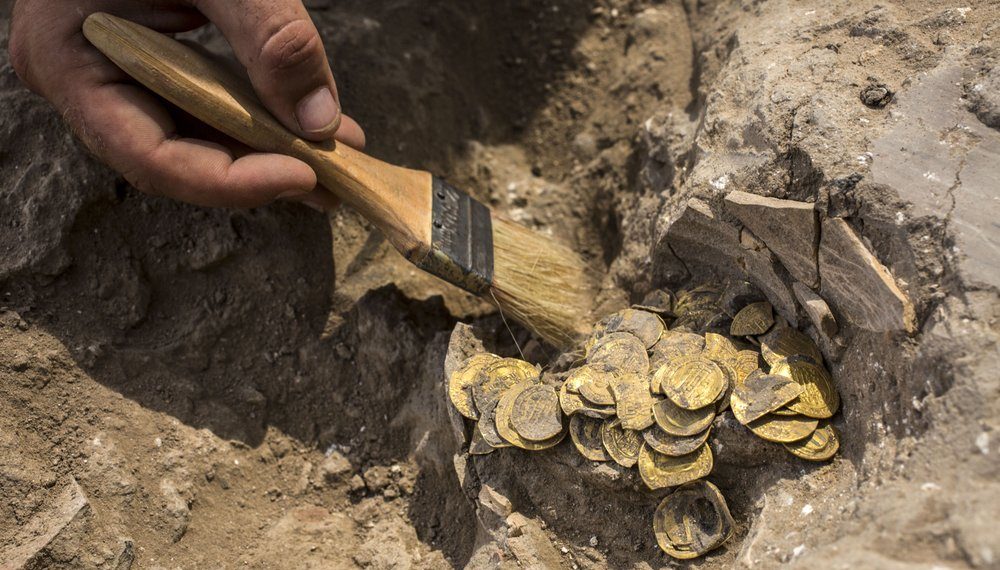Rare trove of 1,100-year-old gold coins discovered in Israel
The Israel Antiquities Authority (IAA) announced on Monday that a rare hoard of 425 gold coins from the Abbasid Caliphate, dating back around 1,100 years ago, was discovered by teenage volunteers at an archaeological excavation in the centre of the country.
The IAA may not have defined the exact location of the place where gold was discovered for obvious reasons.
A group of young people carrying out volunteer work ahead of their mandatory army service found the trove.

“It was amazing. I dug in the ground and when I excavated the soil, saw what looked like very thin leaves,” said teen Oz Cohen. “When I looked again I saw these were gold coins. It was really exciting to find such a special and ancient treasure.”

Excavation directors Liat Nadav-Ziv and Dr Elie Haddad said that it was assumed that whoever buried the coins would have expected they would be able to retrieve the hoard and that the find could point to international trade carried out by the area’s residents.
“Finding gold coins, certainly in such a considerable quantity, is extremely rare.
We almost never find them in archaeological excavations, given that gold has always been extremely valuable, melted down and reused from generation to generation,” the directors said in a statement.
“The coins, made of pure gold that does not oxidize in air, were found in excellent condition as if buried the day before. Their finding may indicate that international trade took place between the area’s residents and remote areas,” the statement read.

Dr Robert Kool, a coin expert at the IAA, said that the total weight of the hoard — around 845 grams of pure gold — would have been a significant amount of money at the end of the 9th century.
“For example, with such a sum, a person could buy a luxurious house in one of the best neighbourhoods in Fustat, the enormous wealthy capital of Egypt in those days,” Kool said, noting that at the time, the region was part of the Abbasid Caliphate, which stretched from Persia to North Africa, with a central seat of government in Baghdad.
“The hoard consists of full gold dinars, but also — what is unusual — contains about 270 small gold cuttings, pieces of gold dinars cut to serve as small change,” Kool said.
He added that one of those cuttings was exceptionally rare and never before found in excavations in Israel — a fragment of a gold solidus of the Byzantine emperor Theophilos (829 – 842 CE), minted in the empire’s capital of Constantinople.
According to the IAA, the existence of the fragment in a trove of Islamic coins serves as evidence of the connections between the two rival empires.
“This rare treasure will certainly be a major contribution to research, as finds from the Abbasid period in Israel are relatively few. Hopefully, the study of the hoard will tell us more about a period of which we still know very little,” Kool said.
